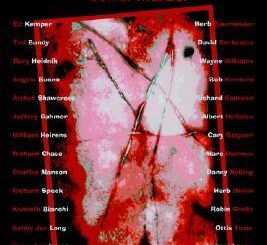
The Netherlands is leading the way in a program of cultural suicide, with legislators approving euthanasia for children under 12. In an announcement made on April 14, Dutch Health Minister Ernst Kuipers wrote that the measures would be aimed at “incurably ill children who are suffering hopelessly and unbearably, in whom palliative care options are not sufficient to alleviate the suffering and who are expected to die within the foreseeable future.”
With this development, Dutch citizens can be legally killed at every stage of their lives: in the womb through abortion, while still young through euthanasia, and in the later stages of life through assisted suicide or euthanasia.
What Does the New Law Do?
The current rules—the Scheme for Termination of Pregnancy and Termination of Life for Newborns—are being amended to thus include children aged 1 through 12. As noted, he argued this would impact the “incurably ill children who are suffering hopelessly and unbearably, in whom palliative care options are not sufficient to alleviate the suffering and who are expected to die within the foreseeable future.”
The legislation adds that a doctor must “completely” inform the child and the parents about the supposed “hopeless and unbearable” suffering. Furthermore, the doctors and parents are supposed to communicate to the child (aged 1—12) in a “manner appropriate to the child’s comprehension” that “the termination of life is the only reasonable possibility to remove the suffering.”
Minister Kuipers added that he anticipated between 5 and 10 children being thus “affected” each year—namely, being legally killed by the state. He described the incoming laws as dealing with a “particularly complex subject that deals with very harrowing situations.”
“I am pleased that, after intensive consultation with all parties involved, we have come to a solution with which we can help these terminally ill children, their parents and also their practitioners,” declared the Health Minister.
Speaking to AFP News, a Dutch Health Ministry spokesman added that if the child could not consent to being killed, his parents could provide the approval.
Help Remove Jesus Bath Mat on Amazon
After—and only after—each child is thus killed, the Public Prosecution Service and a review committee will reportedly review the event to determine if it was conducted with due care and in line with the legal procedure.
Netherlands and Euthanasia: Pre-existing Laws
Even before the new amendments, the Netherlands already has legislation regarding the murder of young children.
Since 2002, the Netherlands has approved legal euthanasia for individuals, including children aged 12 and older. If between 12 and 16, the children would require the consent of their parents before the state kills them. However, minors over 16 are deemed legally able to make their own decisions.
The 2002 law—Termination of Life on Request and Assisted Suicide (Review Procedures) Act—stipulates that the individual must be experiencing “unbearable suffering” and have an incurable illness.
Satanic Christ Porn-blasphemy at Walmart — Sign Petition
Under the infamous Groningen Protocol of 2004, babies under one year of age can be euthanized if it is deemed that there is a “certain” diagnosis of “hopeless and unbearable suffering.” Other requirements must, on paper, be met, including informed parental consent.
In 2013, Dutch doctors defended the protocol in the Journal of Medical Ethics, saying, “We decided to make a protocol that would help us to choose euthanasia if that might be appropriate in future cases.”
They established five conditions to regulate the practice of neonatal euthanasia. These are: (1) diagnosis and prognosis must be certain, (2) hopeless and unbearable suffering must be present, (3) a confirming second opinion by an independent doctor, (4) both parents give informed consent and (5) the procedure must be performed carefully, in accordance with medical standard.”
The doctors added that, by 2013, 60% of the reported cases of euthanized babies under 1 were “unstable babies with an inevitable death, while the remaining 40% was in stable newborns [euthanized] for quality of life reasons.”
How Panera’s Socialist Bread Ruined Company
Abortion in the country is also widely permitted. Legalized in 1984, abortion is legally allowed for any reason up to 24 weeks into the mother’s pregnancy. Abortion is technically illegal after this time but permitted by not being prosecuted, if a wide variety of reasons are met, including:
- The mother wanting an abortion due to “physical or psychological suffering” from the pregnancy.
- The baby having a “current or foreseeable hopeless suffering.”
With this range of laws affecting Dutch citizens in the womb and later stages of life, the only age group protected from being killed by the state were children aged between 1 and 12. The upcoming amendments to the euthanasia laws will ensure that state-sponsored death is handed out to all ages.
The legal changes have sparked outrage amongst pro-life activists. Right To Life UK spokesperson Catherine Robinson noted how “every country that has introduced euthanasia has gradually removed safeguards.”
“The Netherlands is no exception,” she added, “and proves that the introduction of such legislation is almost always followed by widening the criteria, putting the lives of vulnerable individuals at risk.”
What Does Saint Thomas Aquinas Say About Marriage?
Canadian pro-life activist Alex Schadenburg—the executive director of Euthanasia Prevention Coalition—wrote that extending the Groningen Protocol to children aged 1—12 meant “there will be euthanasia deaths of children who may have treatable conditions.”
Media Campaign and Death Figures
The proposed changes to the Dutch euthanasia laws are being pushed forward by the Cabinet and are set to be issued via regulation from the minister. Thus, they will not require the broader approval of the Dutch parliament since it will take the form of a small change to an existing law.
This promotion of child killing is not a new development but has, in fact, been part of a much longer campaign. Following months of debate, the government announced in 2020 that children under one year old would soon be legally killed.
The then-current Health Minister Hugo de Jonge defended the move as something which would benefit “a small group of terminally ill children who agonize with no hope, and unbearable suffering.”
Is It Immodest to Wear Deliberately Ripped Clothes?
He pointed to a study, arguing that it “shows that there is a need for active termination of life among doctors and parents of incurably ill children, who are suffering hopelessly and unbearably and will die within the foreseeable future.”
“In a small number of cases, palliative care isn’t sufficient,” argued the minister. “Because of that, some children suffer unnecessarily without any hope of improvement.”
Following this announcement, a petition was launched opposing the move, reading: “In other words, the law would protect doctors who are willing to kill sick children.” To date, it has garnered over 100,000 signatures.
Minister de Jonge’s legal change did not happen in the predicted number of months, meaning that his successor Minister Kuipers was handed the duties of expanding the law.
While Kuipers argued that his new legal change would lead to the deaths of ‘only’ 5 to 10 children, the statistics point to a considerable and consistent rise in the number of people killed by euthanasia or assisted suicide.
Official figures from 2021, as released by the Regional Euthanasia Review Committee (RTE), revealed that euthanasia accounted for 4.5% of all deaths in the country, with 7,666 individuals killed. The figure was described as an “all-time high.”
That number grew considerably (by 13.7%) over the next twelve months, with 5.1% of deaths being attributed to euthanasia in 2022—thus setting a new record for the second year in a row. A total of 8,720 euthanasia deaths were reported.
Indeed, the figures from 2022 reveal a disturbing trend of accelerated growth in the number of people killed by euthanasia, as previously, the yearly growth had been by 10%, whereas 2022’s growth was 13.7%.
Of this number, some 288 people with dementia were killed by euthanasia.
Thus, the Netherlands, led by politicians focused on killing the Dutch populace, will shortly allow the murder of innocent human beings at every stage of life, from the womb to old age.
Photo Credit: © Magnus – stock.adobe.com















